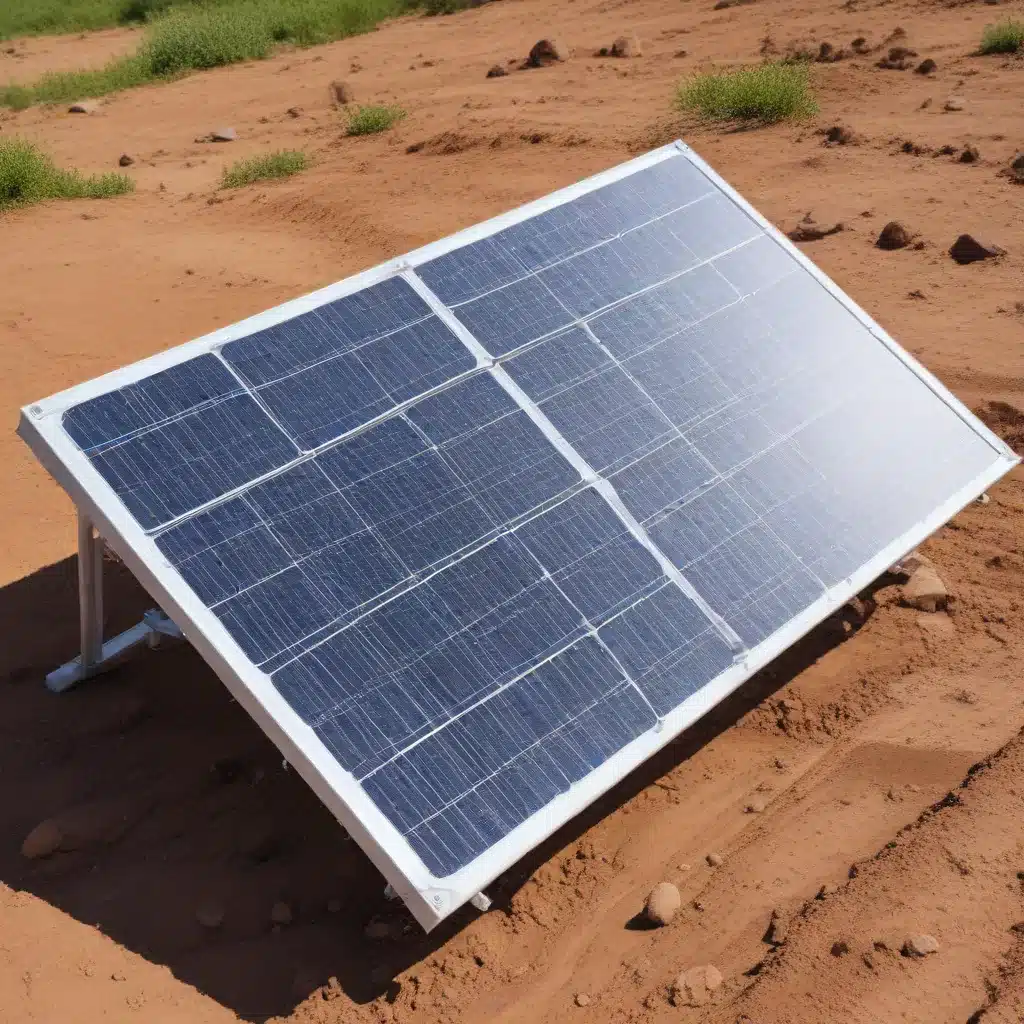
The Challenge of Solar Panel Cooling
The efficiency and power output of solar photovoltaic (PV) panels are highly dependent on their operating temperature. As the temperature of the solar cells increases, their electrical performance decreases due to the inherent properties of semiconductor materials. This poses a significant challenge, as solar panels are often exposed to direct sunlight, which can lead to substantial heating and a corresponding drop in energy conversion efficiency.
To address this problem, various cooling techniques have been explored by researchers and engineers. Passive cooling methods, active cooling systems, and hybrid approaches have all been investigated to mitigate the adverse effects of high temperatures on solar panel performance. Among these, passive cooling systems that rely on natural circulation have emerged as a promising solution, offering a sustainable and low-maintenance alternative to active cooling systems.
Passive Cooling Using Ground Source Energy
One innovative approach to passive cooling of solar panels is the utilization of ground source energy. This method takes advantage of the relatively stable and moderate temperatures present in the ground, which can be used to dissipate the heat generated by the solar panels through natural circulation.
The design of a solar panel cooling system based on natural circulation using ground source energy involves several key components:
-
Solar Panel Assembly: The solar panel is the primary component, responsible for converting solar energy into electrical power.
-
Heat Exchanger: A heat exchanger is integrated into the solar panel assembly, allowing for efficient heat transfer from the solar panel to the cooling medium.
-
Ground Heat Exchanger: Buried underground, the ground heat exchanger taps into the relatively stable ground temperatures to act as a heat sink, facilitating the dissipation of heat from the solar panel.
-
Circulation Loop: A closed-loop circulation system, driven by natural convection, allows the heated fluid from the solar panel heat exchanger to flow through the ground heat exchanger, where it dissipates the absorbed heat and returns to the solar panel to complete the cycle.
The principle behind this passive cooling system is straightforward. As the solar panel heats up due to the absorbed solar radiation, the heat is transferred to the fluid circulating through the heat exchanger. This heated fluid then rises through the circulation loop, entering the ground heat exchanger, where it dissipates the heat into the relatively cooler ground. The cooled fluid then returns to the solar panel heat exchanger, completing the cycle and maintaining a lower operating temperature for the solar panel.
Experimental Validation and Performance Evaluation
To assess the effectiveness of this passive cooling system, researchers have conducted extensive experimental studies. By comparing the performance of solar panels with and without the ground source-based cooling system, they have been able to quantify the benefits in terms of temperature reduction and power output enhancement.
The experimental results have shown that the passive cooling system can effectively reduce the surface temperature of the solar panel by an average of 41.80%, compared to the solar panel without any cooling system, which had an average temperature of 43.08%. This significant temperature decrease translates directly into improved power conversion efficiency, with the cooled solar panel achieving a power efficiency of 8.24% and a maximum power output of 72 Watts per day.
Advantages of the Passive Cooling Approach
The passive cooling system based on ground source energy offers several notable advantages:
-
Sustainable Operation: By relying on natural convection and the stable ground temperatures, the system can operate without the need for external energy inputs or mechanical components, ensuring a sustainable and low-maintenance solution.
-
Enhanced Efficiency: The reduction in solar panel operating temperature leads to a substantial improvement in power conversion efficiency, allowing for greater energy output from the same solar panel area.
-
Cost-Effectiveness: The passive cooling approach eliminates the need for complex active cooling systems, which typically require additional equipment, energy consumption, and maintenance, making it a more cost-effective solution.
-
Scalability: The design of the ground source-based cooling system can be readily adapted to various solar panel sizes and configurations, making it a versatile solution for a wide range of applications.
-
Environmental Benefits: By improving the efficiency and performance of solar panels, the passive cooling system contributes to the overall environmental sustainability of solar energy generation, reducing the reliance on fossil fuels and mitigating greenhouse gas emissions.
Practical Considerations and Future Developments
While the passive cooling system based on ground source energy has demonstrated promising results, there are still some practical considerations to be addressed:
-
Site-Specific Design: The performance of the cooling system can be influenced by factors such as soil type, ground temperature, and climate conditions. Careful site assessment and system design are essential to optimize the cooling efficiency.
-
Integration Challenges: Seamlessly integrating the ground heat exchanger and the solar panel assembly may require specialized engineering and installation techniques to ensure efficient heat transfer and reliable operation.
-
Long-Term Durability: The longevity and reliability of the ground heat exchanger and the overall cooling system over extended periods of use need to be thoroughly investigated and validated.
As research and development in this field continue, we can expect to see further advancements and refinements in the design of passive cooling systems for solar panels. Innovations in heat exchanger materials, optimization of the circulation loop, and the integration of advanced control systems could lead to even greater improvements in thermal management and energy conversion efficiency.
By leveraging the power of natural circulation and ground source energy, the passive cooling approach showcased in this article represents a promising solution for enhancing the performance and sustainability of solar photovoltaic systems. As the demand for renewable energy continues to grow, innovative cooling strategies like this will play a crucial role in maximizing the potential of solar power and contributing to a more sustainable energy future.
For more information on air-cooled heat exchangers and their applications, visit https://www.aircooledheatexchangers.net/.

